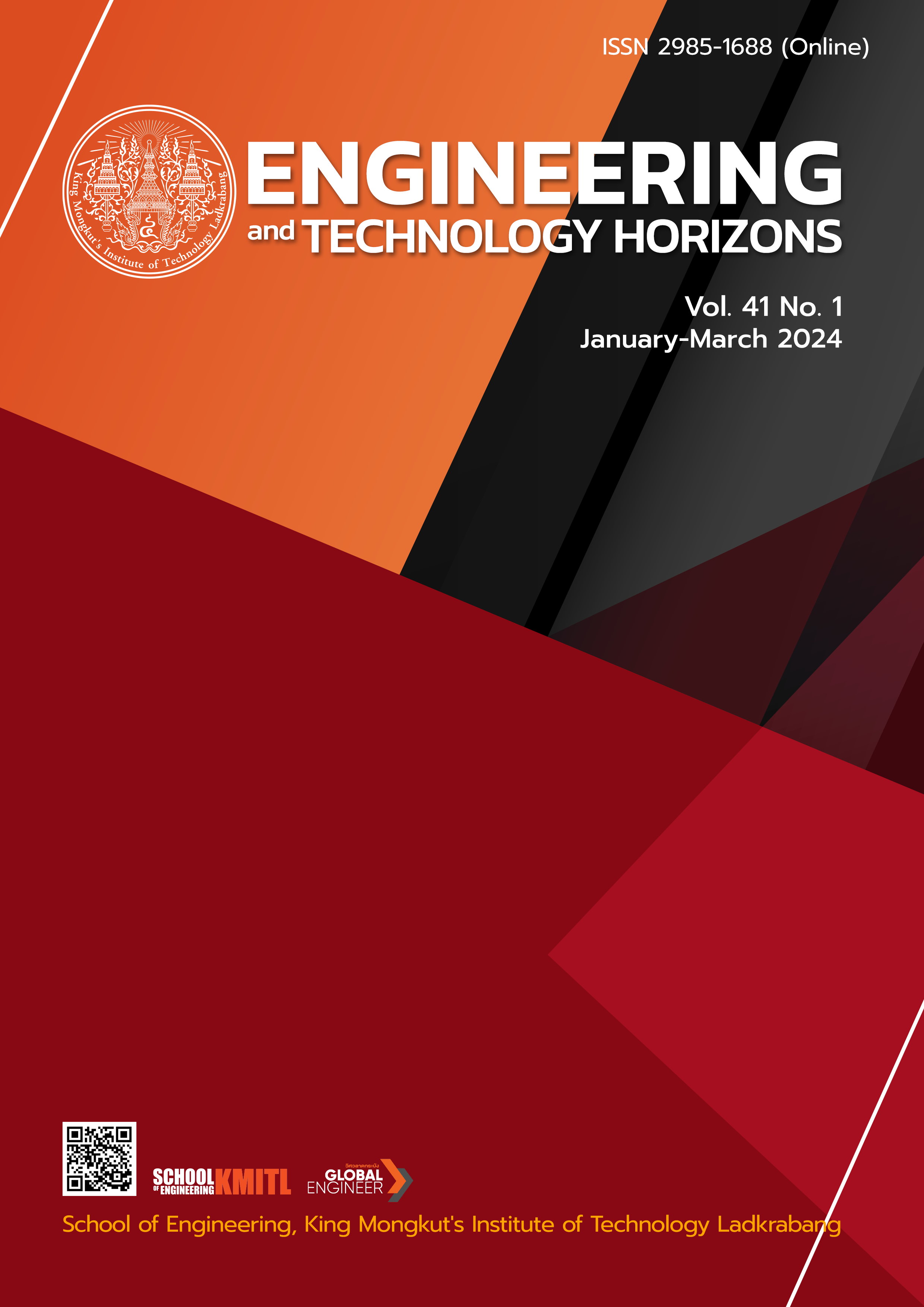A Study of Efficiency and Economic Value of Grade Separated Construction Project: Case Study of Grade Separated Without Ramp across The Sri Ayutthaya Intersection Bangkok
DOI:
https://doi.org/10.55003/ETH.410107Keywords:
Economic Value, Performance Measurement, Grade Separated, Micro Simulation Model VISSIM, The Sri Ayutthaya Intersection in BangkokAbstract
This research was conducted to analyze the efficiency and economic value of grade separated construction projects in a large city due to heavy traffic volumes. This is consistent with the current situation where traffic volumes are continually increasing. In order to reduce fuel consumption, accidents and travel time. In this research, the efficiency and economic value of grade separated without ramp across Sri Ayutthaya intersection will be studied, Bangkok (Thailand), is considered in the form of an underpass through the intersection by using the VISSIM program to create and develop micro simulation traffic models. Then, the economic cost-benefit analysis of the project is evaluated by considering the economic worthiness of the project from a comparison between the case with the project and without the project. The economic worthiness of the project is analyzed by using Net Present Value (NPV), Benefit-Cost Ratio (B/C ratio) and Internal Rate of Return (IRR). From the results of this study, it was found that after developing the current area, which is a ground level intersection into an underpass. Traffic at intersections will be more efficient. And helps reduce traffic congestion at intersections. This is because the average delay of each type of vehicle decreased after the project. Performance measures at intersections can be summarized as the average vehicle delay in the project start year (2027) for motorcycles decreased from 364.48 seconds/vehicle to 85.93 seconds/vehicle, passenger cars decreased from 369.35 seconds/vehicle to 78.42 seconds/vehicle, trucks decreased from 282.19 seconds/vehicle to 78.96 seconds/vehicle, and buses decreased from 420.47 seconds/vehicle to 65.07 seconds/vehicle. And it can be concluded that the project of grade separated construction in the form of an underpass across Sri Ayutthaya Intersection. It is economically worthwhile and suitable for investment. Because the net present value (NPV) in the 15th year of the project (2041) is equal to 1,752.18 million baht, which is greater than 0, the benefits-costs ratio (B/C Ratio) in the 15th year of the project (2041) is equal to 3.61, which is greater than 1, and the internal rate of return (IRR) at the 15th year of the project (2041) is equal to 42%, which is greater than 12%.
References
T. E. Hildebrand, “Unconventional Intersection Designs for Improving Through Traffic along the Arterial Road,” M.S. Thesis, Civ. Environ. Eng. Dept., Florida State Univ., Tallahassee, FL, USA.
A. V. Arjun, Dr. L. Venkat, V. M. Naidu, “Economic Feasibility and Efficient Project Scheduling of Fly-Over in Visakhapatnam (India),” International Journal of Engineering Research and Technology, vol. 2, no. 3, pp. 1–12, 2013, doi: 10.17577/IJERTV2IS3050
Transportation Research Council. Highway Capacity Manual (HCM). (2000). Accessed: Feb. 13, 2022. [Online]. Available: https://sjnavarro.files.wordpress.com/2008/08/highway_capacital_manual.pdf
Federal Highway Administrator. Manual Uniform Traffic Control Devices. (2003). Accessed: Feb. 15, 2022. [Online]. Available: https://mutcd.fhwa.dot.gov/pdfs/2003/pdf-index.htm
Y. Tubpun, “Economic Theory as The Basis for Evaluation,” in Economics project evaluation theory, Bangkok, Thailand: Thammasat University Press (TUP), 1998, ch. 2, pp. 41–46.
Ahmed, Sadiq, “Review of Existing Shadow Pricing Studies for Thailand And Summary of Results,” in Shadow Prices for Economic Appraisal of Projects An Application to Thailand, 1st ed. Washington, D.C., U.S.A.: The World Bank, 1983, ch. 2, pp. 4–10.
Department of Highway. (2018). Road User Cost: RUC, [Online]. Available: http://planning.doh.go.th/sites/default/files/180319_DOH%20RUC_%E0%B8%AD%E0%B8%9A%E0%B8%A3%E0%B8%A1%E0%B8%A0%E0%B8%B2%E0%B8%9E%E0%B8%A3%E0%B8%A7%E0%B8%A1.pdf.
Study Group On Road Investment Evaluation, “Cost Benefit Analysis,” in Guidelines for Evaluation of Road Investment Projects, 1st ed. Tokyo, Japan: Japan Research Institute, 2000, ch. 3, pp. 73–89.
W. Chaipanha and P. Klungboonkrong, “Analysis of Traffic Management System Alternatives at the Five-Leg Junction (The City Spiritual House) in the Khon Kaen City Using PARAMICS,” in 3rd ATRANS Symposium Student Chapter Session, Bangkok, Thailand, Aug. 27, 2010, pp. 28¬38, 2010.
Downloads
Published
How to Cite
Issue
Section
License
Copyright (c) 2024 School of Engineering, King Mongkut’s Institute of Technology Ladkrabang

This work is licensed under a Creative Commons Attribution-NonCommercial-NoDerivatives 4.0 International License.
The published articles are copyrighted by the School of Engineering, King Mongkut's Institute of Technology Ladkrabang.
The statements contained in each article in this academic journal are the personal opinions of each author and are not related to King Mongkut's Institute of Technology Ladkrabang and other faculty members in the institute.
Responsibility for all elements of each article belongs to each author; If there are any mistakes, each author is solely responsible for his own articles.






